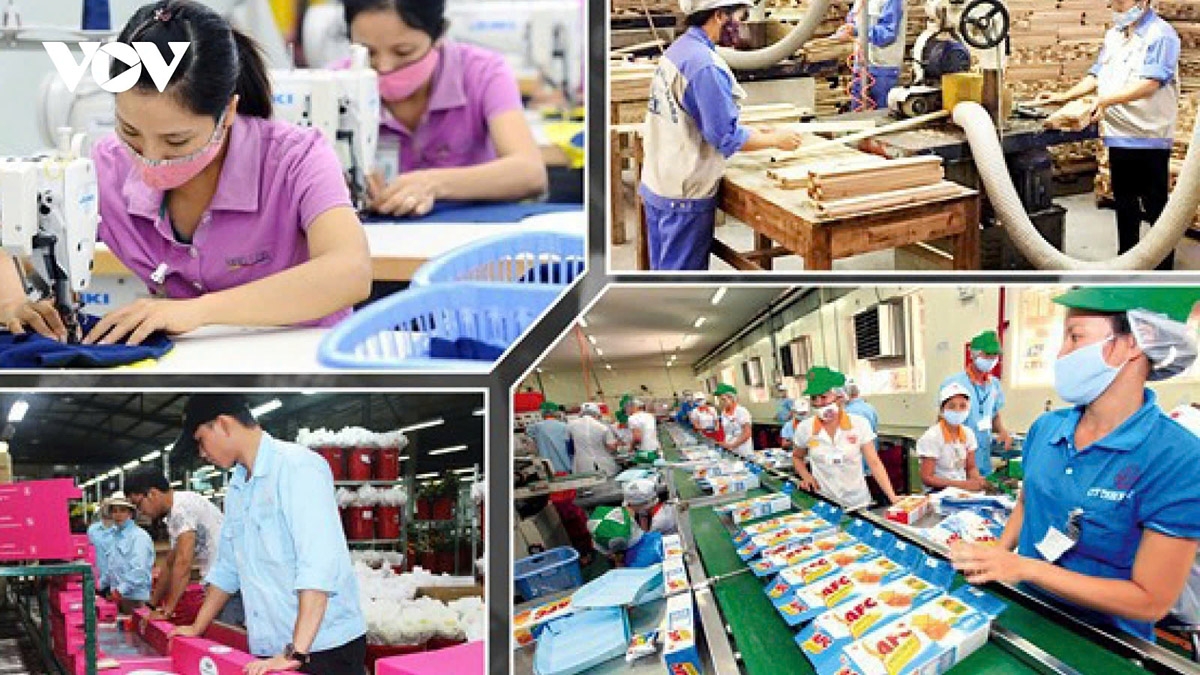Vietnam to meet 7% GDP growth target if post-Yagi support solutions quickly implemented
Society – Economy - Ngày đăng : 16:31, 16/10/2024
Nine-month impressive growth

Addressing a policy dialogue recently held in Hanoi, Nguyen Quoc Viet, deputy director of VEPR, noted that the Vietnamese economy recovered relatively well in the past three quarters amid optimism about overall global economic growth in late 2024 and 2025. Nine-month GDP growth reached 6.82%, more than 1.5 times higher than the 4.4% recorded during the same period last year, with the main contributions coming from the industrial and service sectors.
The agriculture, forestry, and fishery sector was affected by Typhoon Yagi that pounded northern Vietnam in early September, with growth decreasing from 3.43% to 3.2% compared to the same period last year. Services continued to grow at 6.32% year-on-year, thanks to the revival of tourism and the trade and transportation sectors maintaining their growth momentum.
Meanwhile, the industrial and construction sectors saw an 8.19% increase compared to a growth rate of 2.41% in the same period last year, driven by a recovery in processing and manufacturing, which contributed 2.44% to the overall increase in the economy’s gross value added.
Notably, the import-export of goods exceeded expectations, with a total turnover reaching US$578.5 billion, a significant increase of 16.3% year on year, and a trade surplus of US$20.8 billion. Disbursed FDI capital hit a record high of over US$17.3 billion, an increase of 8.9% year on year. The tourism sector also saw a strong recovery, with more than 12.7 million foreign arrivals recorded, up 43%.
Challenges ahead
Despite positive highlights, the VEPR Deputy Director reminded that there are still risks and challenges lying ahead. According to him, the Purchasing Managers’ Index (PMI) for the manufacturing sector declined and fell below the 50 mark in September. The ratio of businesses withdrawing from the market remained high compared to those entering. Domestic consumption and public investment disbursement did not meet expectations.
He further noted that FDI, which is a key driver of growth in Asian countries, including Vietnam, showed signs of stagnation in Q3.
“Therefore, it is essential to carefully study the trends of FDI flows globally and into Vietnam specifically to develop responsive policies in the coming period,” said Viet.
Looking further ahead, he said weaker-than-expected consumer and production demand in the US, significant slowdown in growth in Europe, and sluggish growth in China could disrupt the export recovery process and weaken Vietnam’s growth rate.
“Balancing the growth drivers, particularly between export momentum and domestic market growth, ensuring macroeconomic stability and sustainable growth has become urgent in this context,” stated the VEPR deputy director.
During discussions, economist Pham Chi Lan also shared that growth in Q3 still relied on exports, largely thanks to FDI enterprises, while domestic consumption and investment have yet to increase significantly due to the lingering effects of the COVID-19 pandemic.
In addition, she said, the underdevelopment of domestic supporting industries and micro, small, and medium enterprises (MSMEs) has hindered the country’s efforts to position itself on the global value chain, increasing the gap between the foreign-invested sector and local businesses.
“The achievements of Q3 this year give us confidence in recovery and continued development in the years to come. But if we do not achieve good growth goal this year, it will impact the following years,” she pointed out.
Two new growth scenarios
Taking the floor, Phan Duc Hieu, a member of the National Assembly’s Economic Committee, agreed that there remain challenges ahead in the last months of 2024. In particular, he said the damage caused by super typhoon Yagi has not yet been fully addressed, severely impacting the production and business activities of both enterprises and residents.
According to the legislator, the typhoon did not immediately impact growth in Q3, but subsequent quarters, particularly in Q4 2024. He therefore suggested quickly implementing the government’s resolution on post-storm support policies in Q4 to reach the annual GDP growth target of 7%.
Alongside unveiling an economic report for Q3, the VEPR think-tank also released an update on two GDP scenarios for Q4 and the whole year 2024. In the first scenario, growth in Q4 is expected to remain steady at 7.4% that will help fuel the annual rate to 7%. The second scenario will see Q4 growth fall below 7%, with annual GDP estimated to hover around 6.84%.
